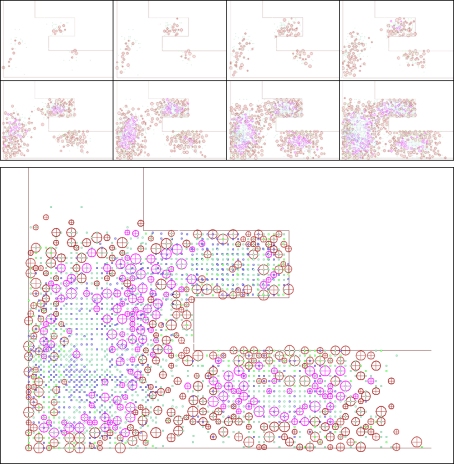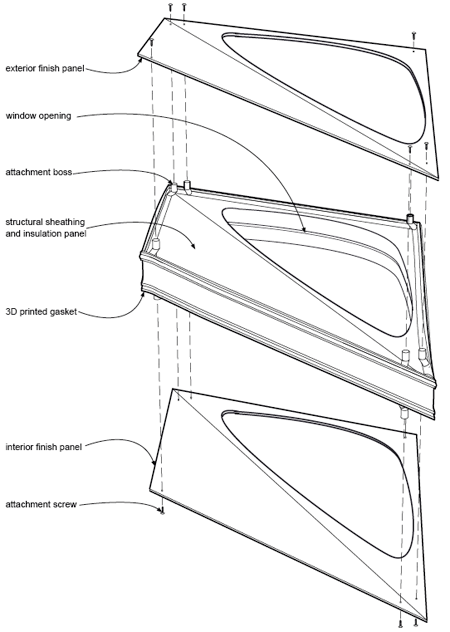Chris Chalmers will be presenting the following essay at ACADIA
2008. It is based on research done for the Master of Architecture
program at California College of the Arts, San Francisco. download it here.
More background & supporting research can be found at Chris’ thesis blog site.

Abstract
Vegetation
is divided into natural sets in which diverse species reciprocally
limit each other and in which, consequently, each contributes in the
creation of an equilibrium for the others. The set of these plant
species finally forms its own environment. In this way exchanges
between plants and the atmosphere eventually create a sort of screen of
water vapor around the plant zone which limits the effect of radiation,
and the cause gives birth to the effect which checks it in turn, and so
on.
The same views should be applied to the animal and man. However, the
human reaction to the challenge of the environment happens to be
diversified. Man can bring several solutions to a single problem posed
by the environment. The environment proposes without ever imposing a
solution. Certainly, the possibilities in a definite state of
civilization and culture are not unlimited. But the fact that what at
one time is seen as an obstacle may later prove to be a means of action
is ultimately due to the idea, the representation that man forms –
collectively, of course – of his possibilities and needs.
-Georges Canguilhem - The living being and its environment (milieu)
The role of the architect is quite literally one of assembly:
synthesizing the various parts of a project into a cohesive whole. It
is a difficult job, often requiring the architect to weave many
seemingly contradictory concerns into a solution that benefits them
all. It is not surprising then, that the many elegant and effective
systems found in nature should be inspiring to the architect. Emerging
fields like biomimicry and systems dynamics model the patterns of
interaction between organisms and their environments in terms of
dynamic part to part and part to whole relationships.Observations of
real relationships between organisms and their environments, as they
exist in nature, reveal complex feedback loops working across multiple
scales. These feedback loops operate by the simultaneous action of two
observed phenomena. The first is the classic phenotypic relationship
seen when organisms of the same genetic makeup instantiate differently
based upon differences in their environment. This is the relationship
that was originally proposed by Charles Darwin in his theory of natural
selection of 1859. Darwin’s model is unidirectional: the organism
adapts to its environment, but not the other way around. It operates at
the local scale as individual parts react to the conditions of the
whole. (Canguilhem, 1952).The second phenomenon, which sees its effect
at the global scale, is the individual’s role as consumer and producer
in the flows of energy and material that surround it. It is the subtle
and incremental influence of the organism upon its environment, the
results of which are often invisible until they reach a catastrophic
threshold , at which point all organisms in the system feel global
changes.The research presented in this paper addresses the dialectic
between organism and environment as each responds reciprocally to the
others’ changing state. Such feedback loops act in a non-linear
fashion, across nested scales in biological systems. They can be
modeled to act that way in a digital design process as well. This
research is an exploration into one such model and its application to
architecture: the simple communication between organisms as they affect
and are affected by their environments through the use of signal
chemicals.

Scripted “Cell” Aggregation Within a Site Boundary

Exploded axon of prefab panel system


Scale models of laser-cut plywood panels and 3D printed rubber gaskets



